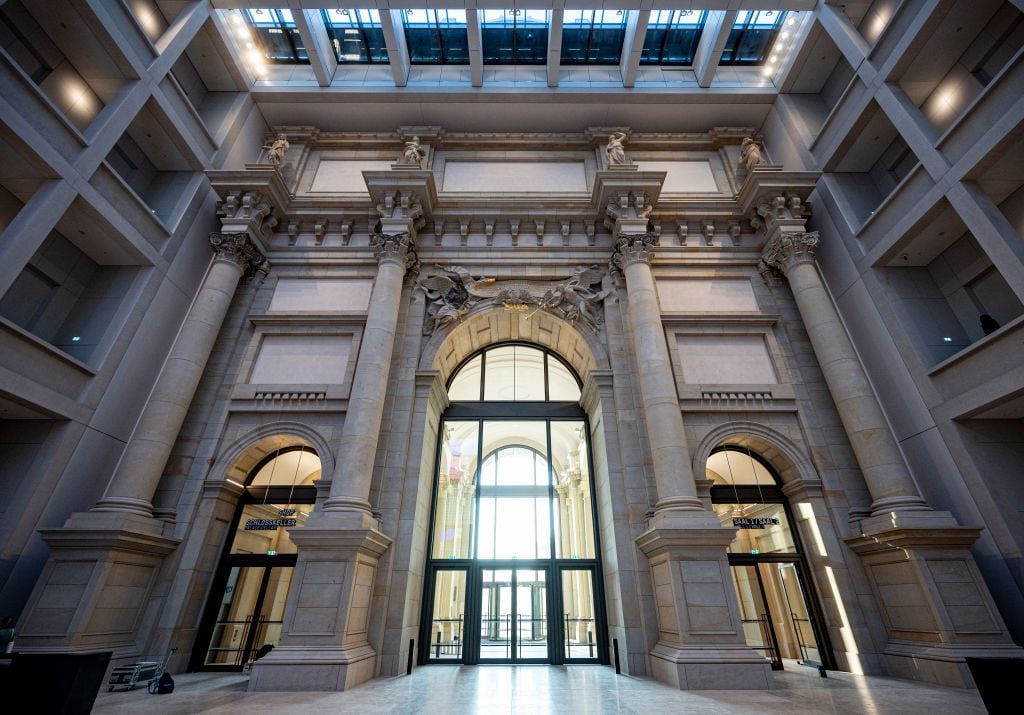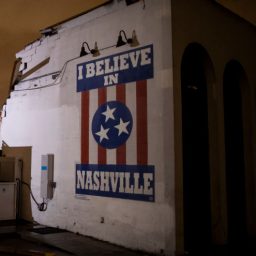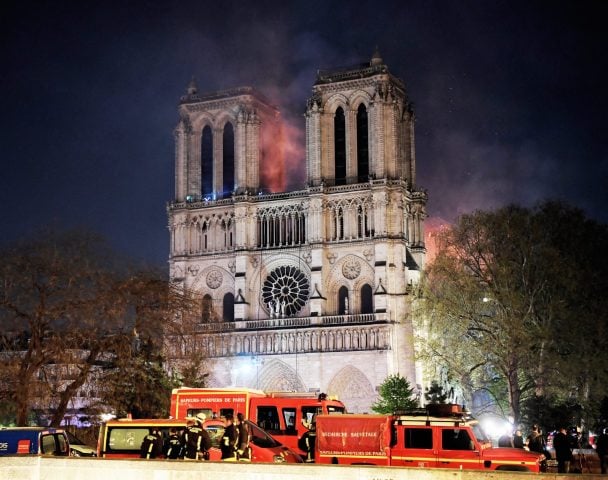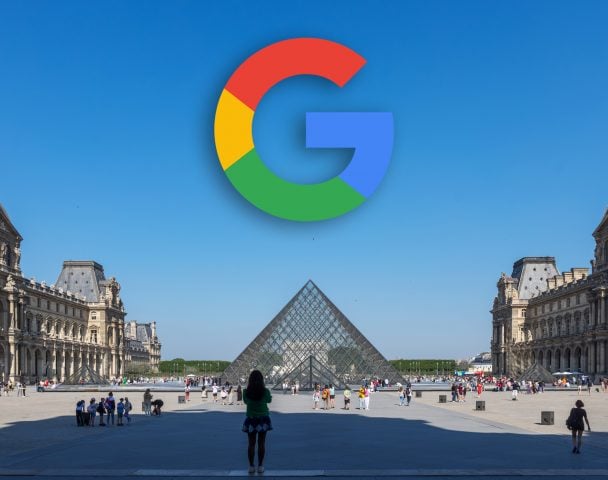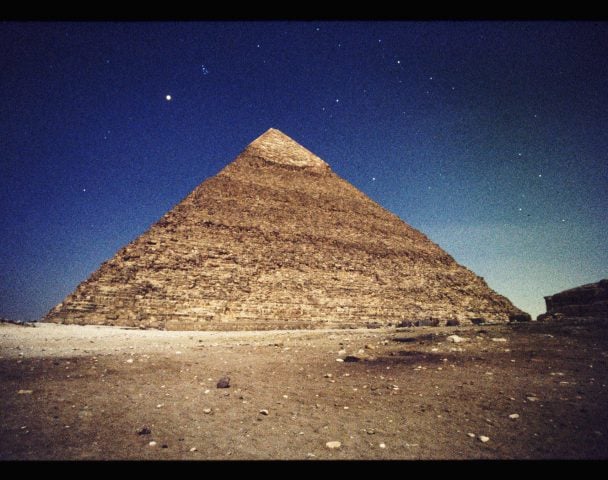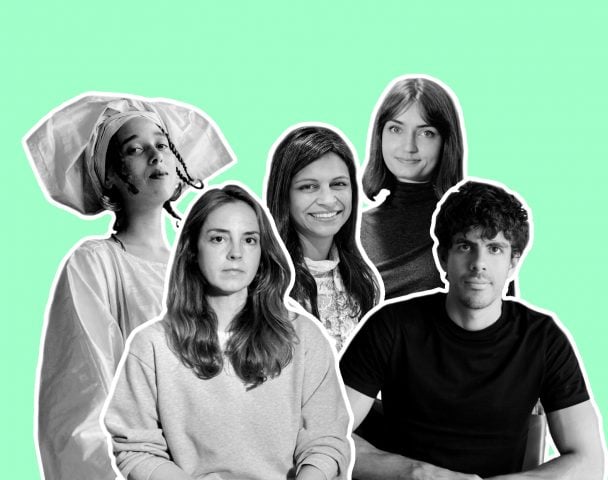The Humboldt Forum in Berlin is finally about ready to open to the world.
The mammoth building, which will house Germany’s ethnographic and Asian collections, transforms the landscape of the city’s Museum Island. But the world around it has transformed as well since the €680 million project first broke ground over 10 years ago.
Nevertheless, its director, veteran art historian Harmut Dorgerloh, is eager to prove that the long-delayed museum is not so out of step with the spirit of the times. (Unfortunately, in order to do that, he will have to keep waiting: due to the coronavirus, the opening will now be digital-only on Wednesday, December 16.)
“We are ready,” Dorgerloh said to the small group of journalists who were invited to see the completed palace this week. Around the group, scores of workers were putting finishing touches on the cinematic lighting in the foyer and adding screws to door handles.
But whether the institution is politically ready for the public is a whole other matter, and remains to be seen.
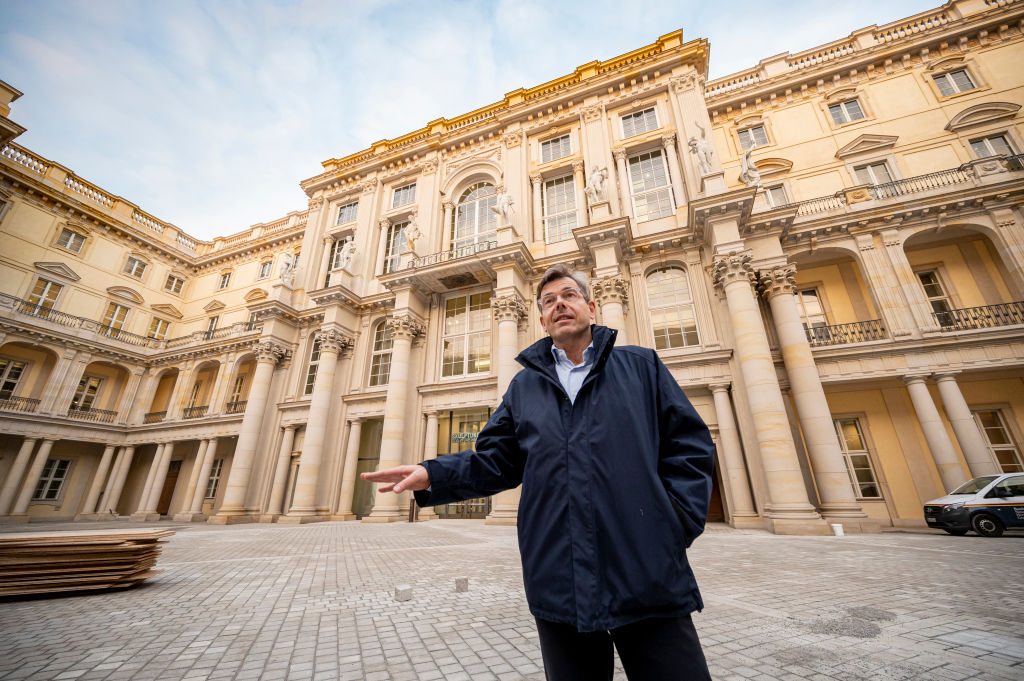
Hartmut Dorgerloh at the Humboldt Forum in Berlin. Photo: Fabian Sommer/dpa.
A Foundational Error
The building, designed by the award-winning architect Franco Stella, is like a mirage. From afar, it bears the same character as the old royal palace on which it is modelled, which was completed after centuries of work in 1918. There is the golden cupola on its roof, countless single-hung windows, and Baroque sculptures watching over those who step through its towering arched entranceway.
But when you approach the building, the curtain is pulled back. Its neatly manicured facade does not bear the pockmarks of wartime shrapnel, as the old palace did. On Tuesday, its facade was still being perfected with a thin layer of sculpted plaster. Inside, the antiquated exterior gives way to a pristine white and modern layout. Signage pointing to art of the various regions of the world is in a crisp sans-serif typeface.
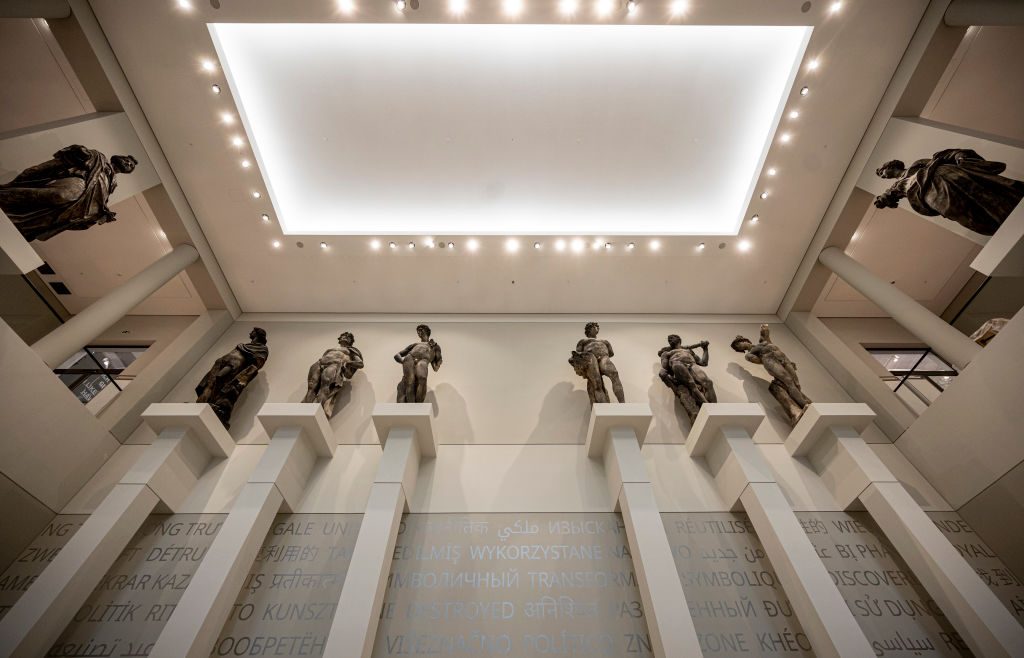
The sculpture hall with antique sculptures in the Humboldt Forum. Photo: Fabian Sommer/dpa picture alliance via Getty Images.
Dorgeloh whipped through the building, explaining in colorful detail all the objects that will be installed throughout 2021: A Haida totem pole from British Columbia here, a historic Oceanic tapestry there, treasures from imperial China underneath a vast wooden slat ceiling designed by architect Wang Shu over there. And indeed, the rooms are exquisite. Dorgerloh says this is unusual for museums of ethnographic or natural history, which are often characterized by dark walls and moody spotlights.
Most of the objects are still in their former home outside the city, in Dahlem. What few pieces are in place are covered in protective wrapping until the institution opens, whenever that happens to be. Objects that speak to the history of the building are peppered throughout, including sculptures of former Prince Electors for the days of Prussia, and objects culled from Berlin’s former Palast der Republik; the ruins of both lay below the Humboldt Forum site, and have been restored as part of a permanent exhibition on the site’s history.
Most poignantly, there is a Plexiglas ballot box from Germany’s first post-reunification election, which Dorgeloh said carries a particular weight for him as an East German.
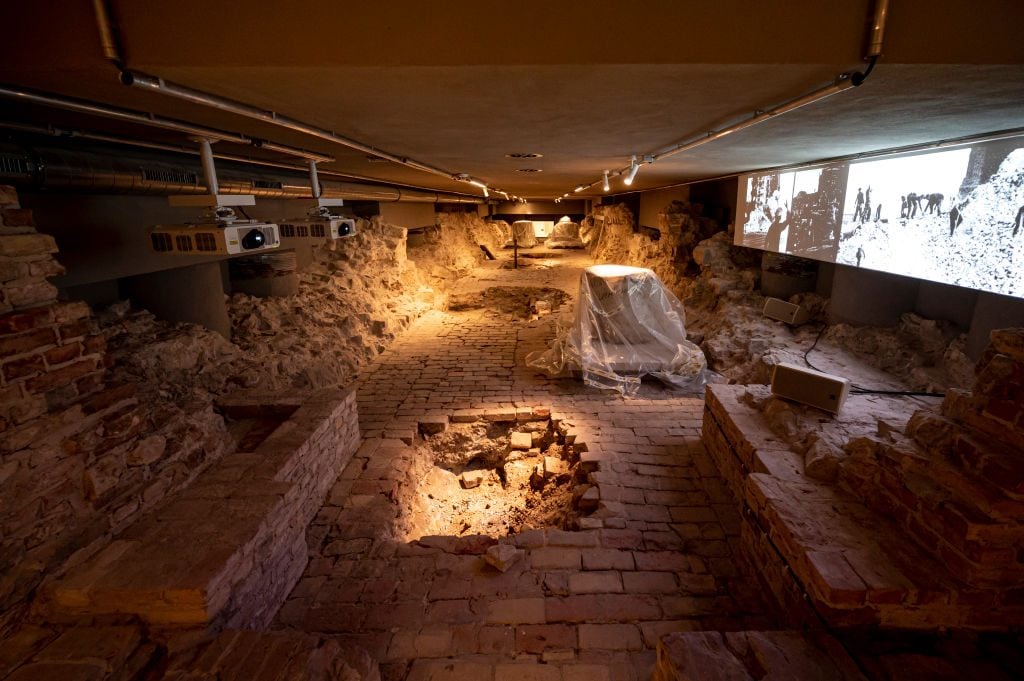
The exhibition in the basement of the Humboldt Forum, showing the foundation walls of the Old Palace. Photo: Fabian Sommer/picture alliance via Getty Images.
Opening Up to a Radically New World
It has been more than 20 years since the German government first decided to reconstruct the decadent Prussian palace on the grounds of East Germany’s parliamentary building, which was demolished after reunification.
But when the Humboldt Forum was first given a rubber stamp of approval, issues of colonialism, racial politics, gender identity, and restitution were not part of mainstream discourse. The longer it takes the museum to finally open, the more organized its opponents become, and the more aware the public grows.
This year, after logistical issues (and a small fire) postponed the opening yet again, the Coalition of Cultural Workers Against the Humboldt Forum demanded it be torn town. They protested en masse outside the building. They made a papier-mâché replica of the cupola and tossed it into the nearby moat.
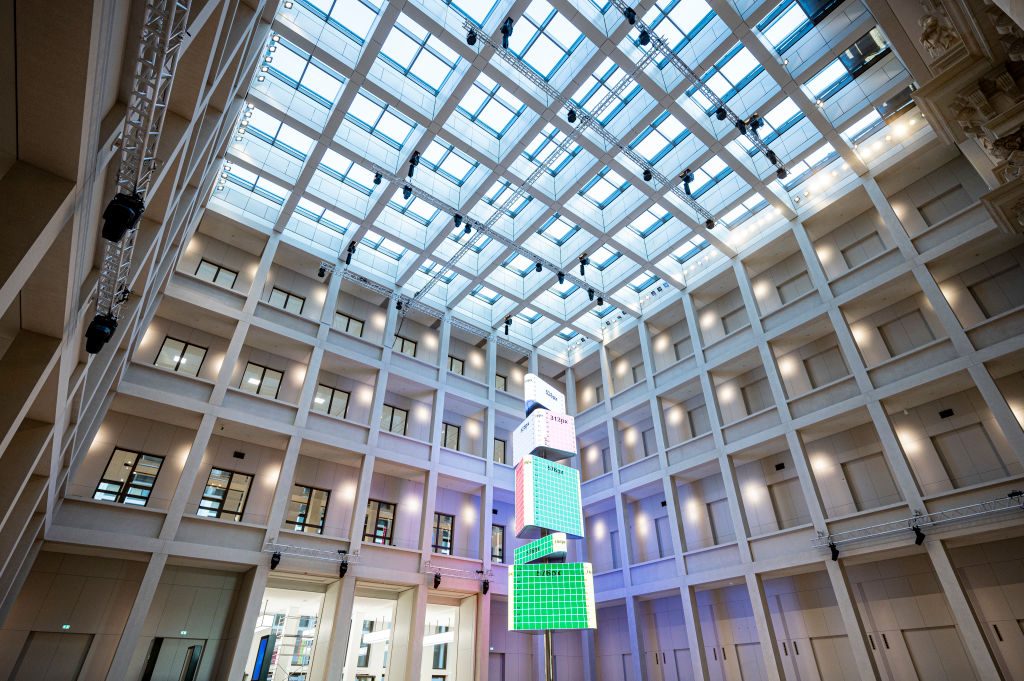
The foyer of the Humboldt Forum. Photo: Fabian Sommer/picture alliance via Getty Images.
Increasingly, Germany and other former imperial powers are being asked to atone for the damages they wrought on their colonies: just this week, concerns about Berlin’s ownership of 255 Benin bronzes that were looted from the Royal Benin palace (present-day Nigeria) in 1897 bubbled to the surface when Nigeria’s Ambassador to Germany, Yusuf Tuggar, publicized his official restitution request on Twitter. The Berlin State Museum has even more of these contested objects from the late-19th century British raid than the British Museum does.
The Nigerian embassy said that it is “waiting for a response” from the German government to its 2019 letter about the bronzes, according to the ambassador.
The tweet caused a stir. A spokesperson from the Prussian Cultural Foundation, which oversees the Humboldt Forum, said that while Germany did get a letter from the Nigerian ambassador last year, that it “no official return request from the Federal Republic of Nigeria” was ever received. Tuggar seems to see it differently—his tweet said the letter was “formal,” and that the restitution request came from the entire government of Nigeria and its citizens.
The spokesperson said the foundation was willing to continue discussions. Discussions may not be enough. “If they are reclaimed, then they have to be returned,” Berlin culture minister Klaus Lederer told a German newspaper on Thursday. “I have no doubt about that. That the bronzes stand in Europe is the result of a great colonial raid.”
In the meantime, there’s another museum that will put increased pressure on Germany to respond more actively in the eyes of Nigeria and many around the world. In November, the British-Ghanaian architect David Adjaye presented his designs for a new institution, the Edo Museum of West African Art. It is planned for 2025 in Benin City, Nigeria, also on ruins, so to speak—it will be near the site of the former palace that was looted of these contested bronzes, many of which will sit here in Berlin.
We must still wait and see just how Humboldt Forum will deal with these objects. And yet, what is already visible is that this decadent institution is a symptom of a festering wound: Germany’s colonial legacy.
The Humboldt Forum will open on Wednesday, December 16 online.
